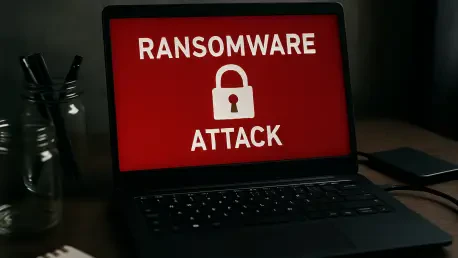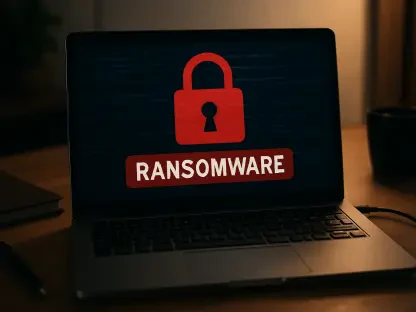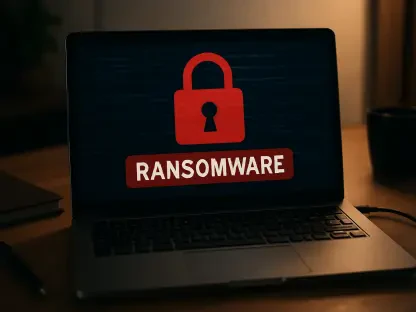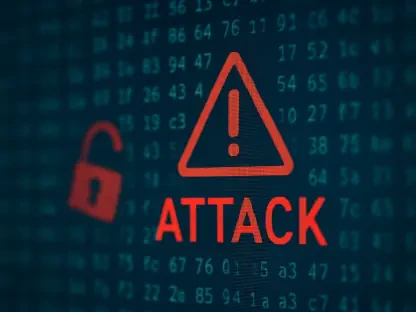Overview of the DaVita Cyberattack
Imagine a healthcare giant, responsible for the lives of millions, suddenly crippled by a digital assault that locks away critical patient data, sending shockwaves through the industry. This scenario unfolded for DaVita, a leading U.S. dialysis provider, when a ransomware attack compromised the personal information of approximately 2.7 million individuals. The breach, one of the largest of its kind in the healthcare sector this year, has raised urgent questions about data security in a field where trust is paramount.
The attack specifically targeted DaVita’s labs database, a repository of highly sensitive patient information, encrypting portions of the company’s network and rendering them inaccessible. This incident exposed the vulnerability of healthcare systems to cyber threats, where even a single breach can have devastating consequences for millions. DaVita, despite the disruption, has publicly committed to addressing the crisis while maintaining focus on patient care.
Central to this discussion is the scale of the breach and the immediate steps taken by the company to mitigate harm. With patient data at risk, the response required swift action to notify affected individuals and secure systems against further damage. This event serves as a stark reminder of the escalating cyber risks facing healthcare providers today.
Background and Importance of Cybersecurity in Healthcare
DaVita operates nearly 3,000 outpatient clinics across the United States, alongside at-home dialysis services, making it a cornerstone of renal care for countless patients. The organization’s vast network and critical role in healthcare delivery amplify the impact of any disruption, especially one involving personal health information. A breach of this magnitude not only affects operations but also undermines the foundation of patient-provider trust.
Healthcare organizations have increasingly become prime targets for ransomware attacks due to the sensitive nature of their data and the potential for significant financial gain through extortion. The trend of cybercrime in this sector shows no signs of slowing, with attackers exploiting vulnerabilities in digital infrastructure to hold entire systems hostage. Such incidents often result in operational delays, compromised care, and long-term reputational damage.
The importance of cybersecurity in healthcare cannot be overstated, as breaches pose risks beyond financial loss, directly threatening patient safety and privacy. Protecting digital systems is not merely a technical requirement but a moral imperative to safeguard vulnerable populations. This incident at DaVita highlights the urgent need for robust defenses to prevent cybercriminals from exploiting gaps in security protocols.
Details of the Attack, Response, and Financial Impact
Nature of the Attack
The ransomware attack on DaVita involved sophisticated encryption tactics that locked access to critical segments of its network. Specifically, the labs database, which stores detailed patient records, became the focal point of the assault, leaving sensitive information at risk of exposure. This targeted approach underscores the deliberate intent of cybercriminals to exploit the most valuable data within healthcare systems.
Unlike broader network attacks, this breach zeroed in on a repository essential for diagnostic and treatment processes. The encryption effectively halted normal operations in affected areas, creating immediate challenges for data retrieval and system functionality. Such precision in targeting reveals the growing sophistication of cyber threats facing the industry.
DaVita’s Response
In the wake of the attack, DaVita prioritized continuity of care, ensuring that dialysis services remained uninterrupted for patients reliant on life-sustaining treatments. Teams worked tirelessly to maintain operational stability, demonstrating a commitment to patient well-being even under extreme duress. This focus on service delivery amid chaos reflects the resilience embedded in the company’s operational framework.
Beyond sustaining care, the company took proactive steps to address the breach’s fallout by notifying both current and former patients whose data may have been compromised. Additionally, complimentary credit monitoring services were offered to help mitigate the risk of identity theft and financial fraud. These measures aim to rebuild trust and provide tangible support to those affected by the incident.
Financial Consequences
The financial toll of the ransomware attack on DaVita has been substantial, with recovery and remediation costs totaling $13.5 million in the second quarter of this year. This figure breaks down into $1 million directly tied to increased patient care expenses, ensuring no lapse in service quality during the crisis. The remaining $12.5 million covered administrative efforts, including third-party expertise to restore systems and fortify defenses.
These expenses highlight the hidden costs of cyberattacks, which extend far beyond immediate ransom demands. Investments in system recovery, legal compliance, and enhanced security protocols place a heavy burden on healthcare providers already navigating tight budgets. The financial impact serves as a sobering reminder of the long-term consequences of inadequate cybersecurity preparedness.
Reflection and Broader Implications
Reflection on the Incident
DaVita’s ability to maintain critical care delivery during the ransomware attack showcases remarkable operational resilience under pressure. Despite the breach’s severity, patient services continued without significant interruption, a testament to the company’s contingency planning. However, this achievement does not overshadow the glaring vulnerabilities exposed in its digital infrastructure.
The incident reveals a critical tension between maintaining day-to-day operations and addressing systemic security flaws. While patient care remained a priority, the breach of 2.7 million records indicates significant gaps in data protection that require immediate attention. Balancing these competing demands poses a complex challenge for healthcare organizations striving to uphold both service and security standards.
Broader Implications for Healthcare
The ramifications of this attack extend well beyond a single company, signaling a pressing need for the healthcare industry to bolster cybersecurity across the board. With patient data increasingly digitized, the potential for large-scale breaches grows, threatening not just individual privacy but also the integrity of entire healthcare systems. This case exemplifies the high stakes involved when digital defenses fail.
Moreover, the intersection of patient safety, data protection, and financial stability comes into sharp focus through such incidents. Healthcare providers must navigate the dual responsibility of delivering care while safeguarding against cyber threats that can drain resources and erode public confidence. Strengthening industry-wide standards and collaboration will be essential to prevent future crises of this magnitude.
Lessons Learned and Future Outlook
Reflecting on the DaVita ransomware attack, it became evident that the breach of 2.7 million patient records marked a significant failure in data security, despite the company’s commendable efforts to sustain care. The financial strain of $13.5 million in recovery costs further compounded the damage, illustrating the multifaceted impact of such incidents. This event exposed critical weaknesses that demanded urgent remediation to protect against future threats.
Looking ahead, the healthcare sector must treat this breach as a catalyst for transformative change in cybersecurity practices. Investment in advanced protective technologies, regular system audits, and employee training should become non-negotiable priorities to fortify defenses. Collaborative efforts among providers, regulators, and technology experts could establish new benchmarks for data security over the coming years, from now through at least 2027.
Ultimately, the path forward involves a proactive shift toward integrating cybersecurity as a core component of healthcare operations. Developing comprehensive incident response plans and fostering a culture of vigilance can help mitigate risks before they escalate into crises. This incident served as a critical lesson, urging the industry to act decisively to preserve patient trust and ensure the safety of vital health information.









